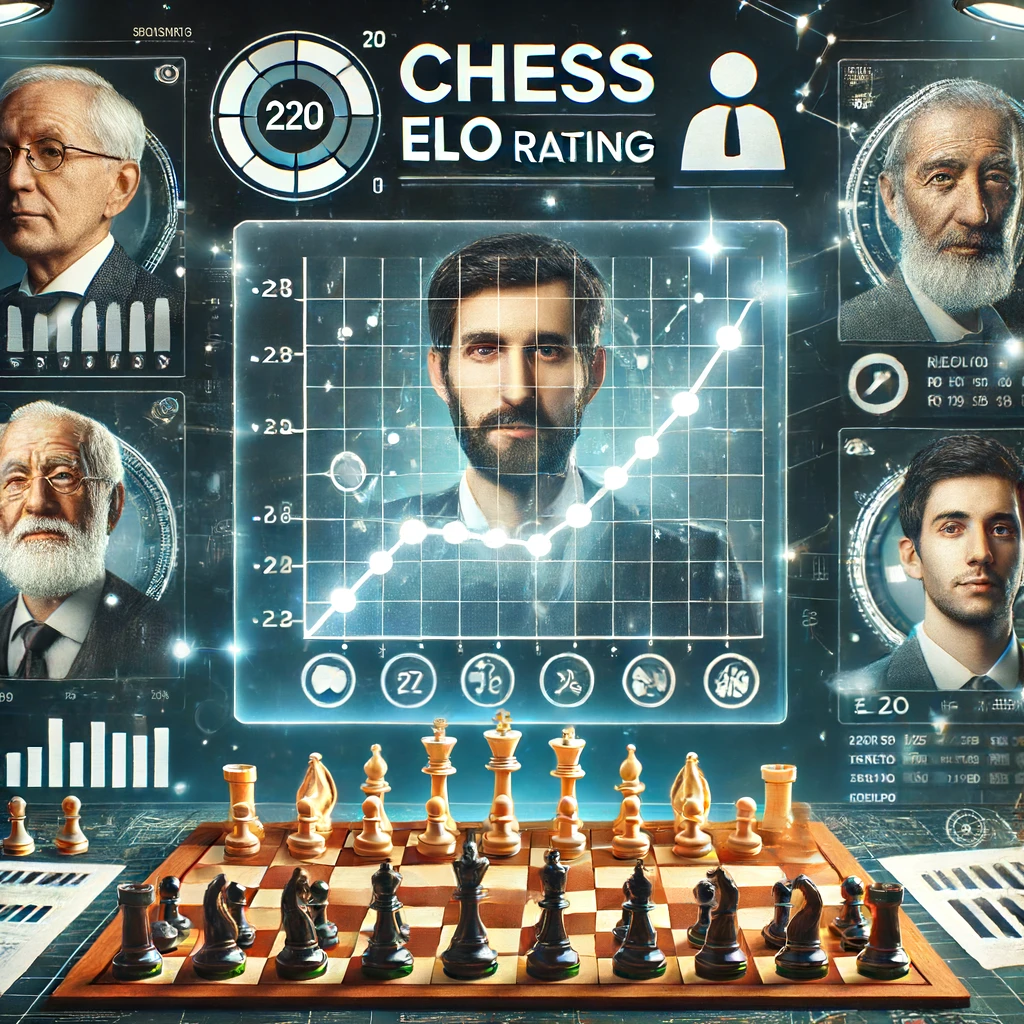
Chess, a game of profound strategy and intellect, has a well-established system for ranking players called the ELO rating system. This rating system has become the universal standard for measuring a player’s skill level and tracking their progress over time. In this article, we will delve into what the ELO rating system is, how it works, its history, and its significance in the world of chess.
What is the ELO Rating System?
The ELO rating system, often simply referred to as ELO, is a method for calculating the relative skill levels of players in two-player games such as chess. Named after its creator, Arpad Elo, a Hungarian-American physics professor, this system has been adopted by the World Chess Federation (FIDE) and various national chess federations worldwide.
How Does the ELO Rating System Work?
The ELO rating system assigns a numerical rating to each player based on their game results against other rated players. Here’s a simplified explanation of how it works:
- Initial Rating: Players typically start with an initial rating. For example, a beginner might start with a rating of 1200.
- Winning and Losing: When a player wins a game, they gain points, and when they lose, they lose points. The number of points gained or lost depends on the difference in ratings between the two players.
- Expected Outcome: The system calculates the expected outcome of a match based on the ratings of the players. If a higher-rated player wins, they gain fewer points, while if a lower-rated player wins, they gain more points.
- Rating Adjustment: After each game, the ratings of both players are adjusted. The adjustment reflects the actual outcome versus the expected outcome.
Example Calculation
Suppose Player A has a rating of 1600, and Player B has a rating of 1400. According to the ELO formula, the expected outcome is that Player A will win. If Player A wins, they might gain 10 points, bringing their rating to 1610, while Player B loses 10 points, bringing their rating to 1390. If Player B wins, Player B might gain 30 points, increasing their rating to 1430, while Player A loses 30 points, decreasing their rating to 1570.
History of the ELO Rating System
The ELO rating system was introduced by Arpad Elo in the 1960s as an improvement over earlier rating systems. Before ELO, the Harkness system was used, which was simpler but less accurate in reflecting the true skill levels of players. FIDE adopted the ELO system in 1970, and it has since become the standard for rating chess players globally.
Significance of ELO Ratings in Chess
Ranking Players
ELO ratings are crucial for ranking players in local, national, and international competitions. They provide a clear and quantitative measure of a player’s skill level, allowing for fair competition and appropriate pairings in tournaments.
Title Qualifications
FIDE awards titles such as Grandmaster (GM), International Master (IM), and FIDE Master (FM) based on ELO ratings. For example, to earn the Grandmaster title, a player must achieve an ELO rating of 2500 or higher and meet other criteria set by FIDE.
Matchmaking
ELO ratings help in matchmaking, ensuring that players compete against others of similar skill levels. This makes games more competitive and enjoyable for participants.
Progress Tracking
Players can track their progress over time through their ELO ratings. As they improve their skills and win more games, their rating increases, providing a tangible measure of their development.
Famous ELO Ratings
Garry Kasparov
Garry Kasparov, one of the greatest chess players of all time, held the highest ELO rating of 2851 for many years, a record that stood until Magnus Carlsen surpassed it.
Magnus Carlsen
Magnus Carlsen, the current World Chess Champion, holds the highest ELO rating ever recorded at 2882. His consistent performance and dominance in the chess world have solidified his status as one of the best players in history.
Bobby Fischer
Bobby Fischer, the American chess prodigy, achieved a peak ELO rating of 2785. His revolutionary techniques and contributions to chess theory continue to influence the game today.
Criticisms and Limitations of the ELO System
While the ELO rating system is widely respected and used, it has some limitations:
K-Factor
The K-factor in the ELO formula determines how much a player’s rating changes after each game. Adjusting the K-factor can significantly impact the rating system’s sensitivity to performance changes, which can be a point of contention among players and analysts.
Inflation and Deflation
Over time, ELO ratings can experience inflation (where average ratings increase) or deflation (where they decrease). This can affect the accuracy of comparing players across different eras.
Draws
In chess, draws are common, and the ELO system’s handling of draws has been debated. The system generally awards minimal points for draws, which can impact players’ ratings, especially in closely matched games.
Conclusion
The ELO rating system is a foundational element of competitive chess, providing a standardized way to measure and compare players’ skill levels. From ranking and matchmaking to awarding titles and tracking progress, ELO ratings play a crucial role in the chess world. Despite its limitations, the system’s precision and widespread acceptance have made it an enduring tool for chess enthusiasts and professionals alike. Understanding ELO ratings can deepen your appreciation of the game and help you navigate the competitive landscape of chess with greater insight.